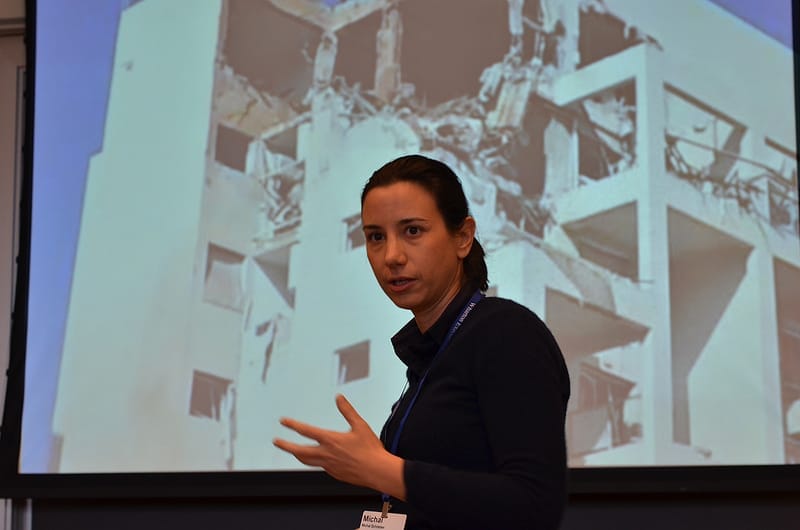Michal Schrieber’s entrepreneurial gig as founder of social media marketing firm Web Done was taking off. Then she received a call from her client at the Israeli Defense Forces (IDF). “Do you have a secure room in your company office?” the voice on the other line asked her. Schrieber’s office was in Tel Aviv, and it turns out Tel Aviv was under missile fire. Israel was at war.
Schrieber related this episode not to get into the politics of the Israeli-Palestinian issue or the reasons behind the so-called Operation Pillar of Defense, but to share with a crowd of Wharton students, staff and other guests in Huntsman Hall on Dec. 10 the lessons learned during her role in the war; She headed the social media crisis management team for the IDF.
Her job with the social media crisis management team, she said, was to simply save Israeli citizens’ lives.
The numbers show what they were up against. During the course of the eight-day conflict in November 2012, Hamas and its supporters shot 1,667 rockets and bombs into Israel, putting 3.5 million of its citizens under fire. Yet only six Israelis perished.
That low fatality number is more telling of success than the sheer quantity of Facebook updates, YouTube videos or Instagram snaps that Schrieber’s team posted during the war.

Prof. Jerry Wind
Jerry Wind, Wharton’s Lauder professor who introduced Schrieber to the audience and engaged us in discussion after her talk, stressed that when it comes to social media, it’s important to measure real impact—output not input.
“No one cares about input. Only bureaucrats care about input,” said Wind, who serves as director of the SEI Center for Advanced Studies in Management.
Then again, Schrieber and her team of 20 employees did not have the time to pause and consider such social media dictums. They worked shifts to fill every hour of every day with what they knew could be life-saving content for their neighbors, friends and family. She did not need years of marketing research and data; she was learning the following lessons about crisis communications as the bombs literally fell:
• Don’t panic. Her job was to calm already stressed, anxious people.
• Go multichannel with your message. They worked mostly on Facebook, but were also on Instagram and YouTube.
• Infographics help. They took complex data information and instructions and “translated them into something human.”
• Their followers often became “social media missioners” who took their mission to the street and spread important messages to their neighbors who were not online
• Oversharing could pose a danger, such as when Israeli citizens tweeted about missiles nearly missing their homes. This could serve to help the enemy recalibrate and better target on subsequent launches. One infographic served to remind folks not to be idiots.
Crisis management through social media is a 24/7 job for brands even when they’re not at war. But one thing retailers or snack-food companies might not have to worry about is spies. A question that didn’t come up during Schrieber’s talk, but one that should have been asked (darn it!) was whether she and her team were concerned about monitoring how much the enemy was watching Web Done’s activities—and changing their attacks in response.
Schrieber was kind enough to speak at a joint event of the Wharton SEI Research Center and Knowledge@Wharton.
Editor’s note: View all of the photos from Michal Schrieber’s Wharton talk at the Wharton Flickr photostream.


























